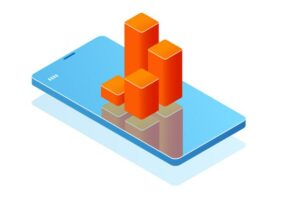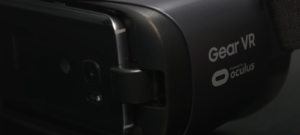This article presents a thorough comparison of two leading augmented experience frameworks: ARCore and ARKit. While often perceived similarly, these technologies possess distinct characteristics that influence their application in the digital landscape.
This comparison aims to shed light on their unique approaches, capabilities, and implications for developers and end-users alike.
ARCore vs ARKit: Comparing the Key Differences
Augmented experience technologies, though occasionally confused with their immersive counterpart, virtual environments, stand distinct. Virtual environments immerse users in a fully digital realm, whereas augmented experience platforms like ARCore and ARKit enhance physical reality by superimposing digital elements.
These technologies offer unique tools for developers, fostering diverse applications in the augmented realm. Understanding the critical contrasts between ARCore and ARKit is essential for appreciating their respective impacts in the augmented landscape.
ARKit
ARKit, integrated into iOS, offers a streamlined process for app development, owing to the closed nature of its operating system. This necessitates Apple’s App Store approval but simplifies the publication process compared to Android’s open-source environment. The launch of ARKit spurred significant responses from other tech giants, including Facebook’s introduction of their augmented platform. While ARKit and ARCore both facilitate augmented experiences, their methodologies differ markedly. ARKit, with its iOS exclusivity, appeals to a large pool of developers experienced in crafting applications for Apple’s ecosystem.
ARCore
In contrast, Google’s ARCore brings augmented capabilities to Android and Pixel devices, employing advanced computer vision without needing specialized hardware. This platform offers a more flexible and interactive approach, allowing users to engage with virtual content in real time.
For instance, users can transform a photograph with virtual paint, adding a dynamic layer to the experience. Initially limited to Google’s latest smartphones, ARCore is expanding its reach across the Android ecosystem, presenting a robust alternative for users and developers not aligned with iOS.
Features of ARKit
ARKit’s integration with iOS, coupled with its large developer community and efficient power usage, are key strengths. Unlike some augmented platforms that require depth sensors or markers, ARKit can render 3D images in physical space independently, a testament to Apple’s proficiency in harmonizing hardware and software design. This results in superior quality experiences on iOS devices compared to their Android counterparts.
Tracking Differences
A notable distinction between ARKit and ARCore lies in their surface tracking capabilities. ARKit’s interaction with the environment is restricted to flat surfaces visible on the screen, necessitating object placement on such surfaces for in-app use.
Conversely, ARCore boasts full 360-degree tracking, accommodating any character within its range. This fundamental difference affects app compatibility, as certain applications may not function if they require interactions beyond the system’s tracking limitations.
Landscape Understanding
Augmented experience technologies are rapidly gaining traction, but not all platforms offer the same capabilities. In evaluating ARCore and its counterpart, it’s crucial to understand their distinct functionalities and optimal use cases. Here’s a closer look:
- ARCore utilizes your phone’s camera to create three-dimensional selfies and interactive experiences;
- Its counterpart, on the other hand, leverages a different approach, suitable for various applications.
When contemplating a new technology investment, weighing the pros and cons of these two augmented platforms is essential. Each offers unique strengths that could be pivotal in deciding which aligns best with your needs.
Light Estimation
The primary distinction between Google’s ARCore and its Apple counterpart lies in their approach to light estimation and object detection:
- ARCore depends on the device’s built-in camera for object detection and tracking;
- Apple’s framework operates across all smartphones, utilizing a front sensor to detect and track spatial objects.
This variation in technology means that Apple’s platform generally offers broader compatibility and, in some instances, more intricate visual details than ARCore.
Features of Google ARCore
Google’s ARCore brings several competitive advantages to the table:
- Android users benefit from seamless integration with Google Play Services, facilitating positional tracking without additional hardware;
- The absence of external devices allows Google to swiftly implement updates and enhancements, a boon for both developers and users.
This streamlined approach to development and deployment fosters a more efficient and creative environment, as developers can focus on innovation rather than compatibility issues.
Motion Tracking
Motion tracking is a key area where ARCore and its Apple counterpart diverge:
- ARCore utilizes the device’s built-in camera for motion tracking, offering a more integrated experience;
- Apple’s framework requires an external camera accessory for augmented experiences, potentially increasing costs and complexity;
- ARCore’s singular mode of operation simplifies development compared to Apple’s dual-mode (device motion and computer vision data) approach;
- ARCore, incorporating HoloLens technology, enhances true object recognition capabilities, an aspect not fully realized in Apple’s platform.
Anchoring Objects
Anchoring objects in the augmented environment is another critical differentiator:
- Apple’s framework allows developers to create 3D objects that appear anchored to real-world surfaces, enhancing immersion;
- This anchoring capability is complemented by the occlusion feature, vital in augmented reality games for hiding virtual objects within the game world.
Understanding these nuances helps in making informed decisions when choosing the right augmented experience platform for your project or application.
Environmental Understanding
Apple’s augmented framework demonstrates advanced environmental comprehension, allowing for the precise placement of virtual elements in real-world settings:
- Virtual objects can be accurately positioned on surfaces like tables and chairs, ensuring appropriate height alignment for users, whether seated or standing;
- Users interact with these virtual elements by selecting and maneuvering them within the space, but interaction with other environmental objects is limited;
- The framework does not currently recognize physical obstructions that may impact the rendering of virtual content.
In contrast, Google’s platform offers enhanced natural interaction with real-world surfaces, although it too has its own set of limitations in environmental understanding.
Developer Ecosystem and Support
The development ecosystem and support structures for these augmented frameworks are pivotal in determining their adoption and success:
- Developer Resources: Both platforms provide extensive documentation, tutorials, and community forums, aiding developers in creating immersive experiences;
- Integration with Other Technologies: They also integrate with various existing technologies and software, making them versatile tools for developers;
- Support and Updates: Regular updates and dedicated support from Google and Apple ensure that developers can keep their applications up-to-date with the latest advancements in augmented technology;
- Market Reach: Given their backing by major tech giants, these frameworks have a wide reach, impacting a significant portion of the mobile user base.
User Experience and Accessibility
User experience and accessibility are crucial aspects where these frameworks differ:
- The ease of use and intuitiveness of the user interface play a significant role in how end-users interact with augmented applications;
- Accessibility features, such as support for different languages and compatibility with various devices, enhance the inclusivity of these technologies;
- Performance on different devices can vary, with some providing smoother and more immersive experiences than others based on hardware capabilities.
As we explore the intricacies of augmented experience technologies, it’s worth noting the relevance of mathematical tools like augmented matrix calculators in simplifying complex calculations involved in developing these technologies. To gain a deeper understanding of how these calculators streamline the development process, consider exploring our comprehensive article on augmented matrix calculators.
Conclusion
To conclude, while both Google’s and Apple’s augmented frameworks share similarities, their differences are notable, particularly in terms of object detection, environmental understanding, and user interaction. Understanding these nuances is crucial for anyone looking to leverage these technologies. This comparison has delved into the unique features, developer ecosystems, and user experiences offered by both platforms.
Ultimately, the choice between them should be guided by specific needs, project requirements, and the target audience’s expectations. Both frameworks have made significant strides in augmented technology, and their ongoing evolution continues to shape the landscape of interactive digital experiences.


Average Rating